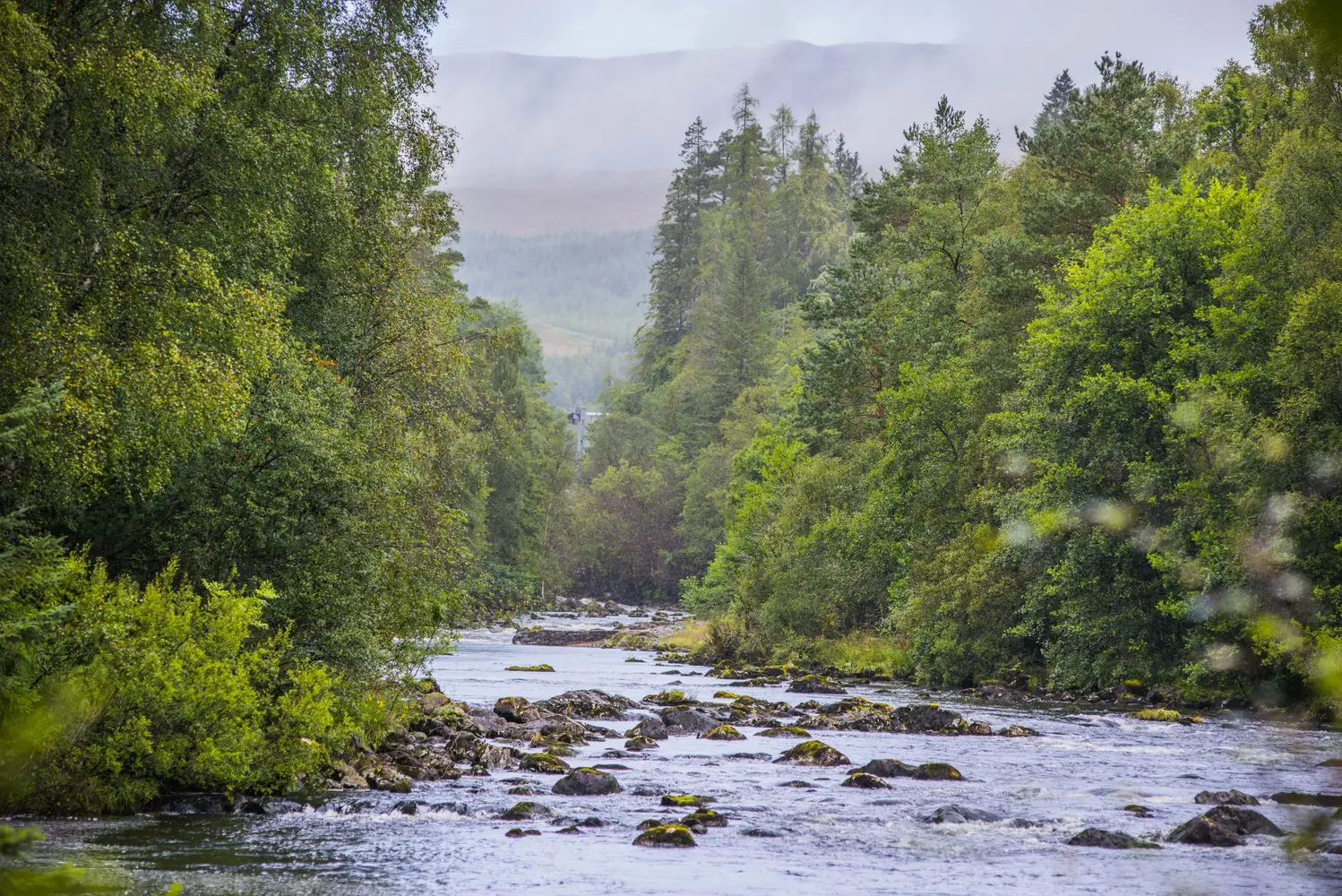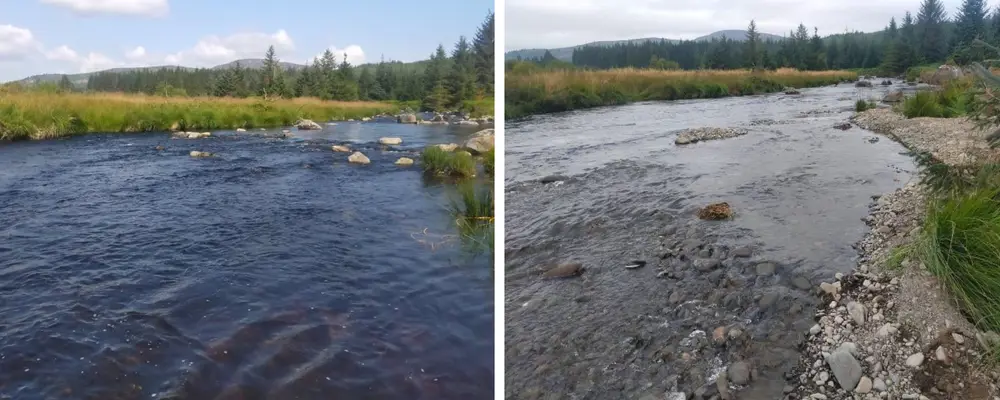Riparian zones

A riparian zone is the area of land along a river or burn. We plant native broadleaf trees along these zones to help with climate change and biodiversity, creating robust wildlife corridors that are not felled for timber.
These important areas are fundamental for a range of projects boosting resilience in our forests. Some of their benefits include:
Shade: broadleaf trees offer just the right amount of shade over the water. This not only provides shade for the fish but also helps prevent water temperatures from increasing. The rise in water temperatures across Scotland is expected to negatively affect freshwater fish, such as salmon, as they spawn in our rivers.
Nutrients: when broadleaf trees shed their leaves in autumn, some of them will end up in the water. These leaves will eventually decompose, adding essential nutrients into the water's soils, helping to support richer aquatic invertebrate communities. Our rivers and burns typically lack nutrients, so this is key to having healthy water systems.
Bank stabilisation: tree roots can help provide structure to riverbanks, helping prevent erosion.
Wildlife corridor: riparian zones not only provide better spawning habitats for freshwater fish, but also provide semi-natural areas where other wildlife such as otters and osprey can thrive. Following the length of the river or burn, these extended linear areas provide protected routes for animals to travel along.
Carbon: while these long lived woodlands can be slower at capturing carbon, they will become effective carbon stores over time, as both trees and the more stable soils grow.
Biodiversity: riparian zones provide networks for a range of species through a natural travel corridor. They also provide rich habitats, great for plants, fungi, mosses and lichens.
Flooding: though conifers are the real flood management powerhouses, natural broadleaf woodland around rivers will also play its part. Trees absorb water through their leaves, roots, and bark and create grooves in the ground that slows water flow.

Riparian zones and climate change
Riparian zones can help in several ways. The additional trees reduce flooding downstream and help improve water quality by slowing the flow rate and filtering water through vegetation, such as mosses and grass.
Additional trees mean that we are capturing more carbon, helping to reduce global warming. The natural wildlife corridor and extra nutrients in the water will help with the biodiversity crisis by providing habitats for a range of species. Overall the riparian zones are helping to create large, resilient linear networks of land spanning across landscapes.
Learn more about the benefits of riparian zones on our Future Forest podcast
Listen now: Future Forest Podcast
How we restore riparian zones
Riparian restoration consists of planting a range of native broadleaf trees such as oak, alder, birch, aspen, hazel and bird cherry along the rivers and burns that run through the land we manage.
We have been doing this for decades across Scotland and, in the past five years, a large-scale riparian project has started in our eastern forests. The project in the East of Scotland involves planting and protecting thousands of native trees, which will act as a seed source for future natural regeneration. The goal is to create a connected semi-natural woodland that runs the entire length of the watercourse.
Sometimes the restoration involves removing non-native and conifer trees too close to the water. Conifer trees often provide too much shade, reducing wildlife activity under the surface. In contrast, the carefully placed (or located) native broadleaves offer the right amount of shade to prevent water temperatures from increasing while delivering essential nutrients to the water.
Other riparian projects:
Black Water of Dee
This partner run project is the first of its kind in Scotland. The goal is to repair the overall habitat of salmon and other freshwater fish along the Black Water of Dee through the restoration of a large riparian area.
This involves removing conifer trees from the riverbanks and adding gravel to build up the spawning habitats.
Learn more about the Black Water of Dee project

Water Voles in the Trossachs
We helped relocate water voles to the Queen Elizabeth Forest Park in the Trossachs. These little eco-system engineers can positively affect the biodiversity around riparian zones through burrowing and grazing.
Since initially releasing 1000 water voles in 2008, the population has grown and now covers an area of 100km².
